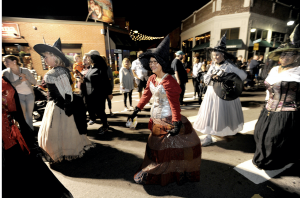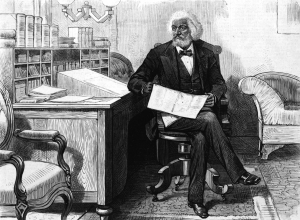Dianna Ortiz, a slight Catholic nun from New Mexico, arrived in Guatemala in 1987 against a backdrop of devastating violence: a decades-long civil war, pitting Marxist guerrillas against the U.S.-backed military, that would ultimately claim 200,000 lives.
But as a member of the Ursuline teaching order who came to the country’s western highlands to help Mayan grade-school children learn to read and write and understand the Bible, she said she felt relatively insulated from the killings and disappearances.
Over the next two years, she disregarded menacing letters and the male stranger on the street who knew her name and tried to intimidate her into leaving the country.
“I didn’t think that the threats were something that I should have taken seriously, because I was a U.S. citizen, and I assumed that my citizenship would protect me,” she later told NPR. “But what I learned — that was not the case.”
The Guatemalan military’s subsequent abduction, gang rape and torture of Sister Ortiz — who died Feb. 19 at 62 in Washington of cancer — became a global news story when she claimed an American with ties to the U.S. Embassy had been complicit in her ordeal.
She was forced to defend her credibility, as a U.S. Embassy official at one point described her account as a “hoax” designed to derail an aid package to the government. The State Department eventually acknowledged that there was “no reason not to believe” her.
Settling in Washington, Sister Ortiz became a prominent advocate of survivors of state-sanctioned violence and helped campaign to expose classified U.S. documents showing American links to human-rights abuses in Guatemala. As a plaintiff in a lawsuit against a Guatemalan defense minister, she shared in a $47.5 million judgment in a U.S. court that concluded she had been a victim of his “indiscriminate campaign of terror” against thousands of civilians.

Despite her small frame — at 5-foot-3, she weighed less than 100 pounds — Sister Ortiz exuded what Kerry Kennedy, president of the Robert F. Kennedy Human Rights group, called “a combination of absolute, angelic innocence and this indescribable inner strength to stand up again and again every time she was brutalized.”
On Nov. 2, 1989, assailants Sister Ortiz identified as Guatemalan security forces abducted her from a convent retreat-house garden in Antigua and drove her to a detention center in Guatemala City.
Targeted for working with the Indigenous community — which the military had long brutalized for presumed left-wing sympathies — she said she was blindfolded and raped by three captors.
They burned her with cigarettes as they demanded names of Indigenous subversives, she said; a doctor who later examined her counted 111 burn marks. She was lowered into a pit with rats and decomposing bodies and later forced to dismember another captive with a machete. She was told the killing was photographed and videotaped, to be used as blackmail if Sister Ortiz attempted to seek redress, she said.
About a day into her imprisonment, a fourth man, called Alejandro but whose accented Spanish led her to believe that he was American, entered the torture chambers and ordered the others to stop. He said Sister Ortiz’s disappearance was making headlines in the local and American media.
She said Alejandro apologized to her for what he claimed was a case of mistaken identity. During a ride to what he said was a safe haven — and what she assumed would be the place of her execution — the man advised her strongly to forget what had happened. She jumped out at a traffic stop and hid inside a store before calling members of her religious community to rescue her.
After returning to the United States two days later, Sister Ortiz experienced vast gaps in memory of her pre-Guatemala life; she recoiled from family and friends in the Ursuline community, many of whom she no longer recognized. She spent several years rebuilding her life, including intensive counseling. She said she had become pregnant through the rapes and had an abortion.
“I felt I had no choice,” she later told the Kennedy human rights organization. “If I had had to grow within me what the torturers left me I would have died.”
In the early 1990s, she filed Freedom of Information Act requests to obtain files from U.S. government agencies in the hope of identifying the suspected CIA operative. The Justice Department opened and then closed an investigation citing a lack of evidence. (She told The Washington Post she had stopped cooperating because of questions that made her feel revictimized.)
She began recounting her story in media interviews and on Palm Sunday 1996 began a weeks-long hunger-strike and vigil in Lafayette Square outside the White House. “I want to know why I was targeted,” she told the Washington Times, “and why a U.S. citizen had the authority to give orders to my torturers, and why he had access to a clandestine prison.”
Sister Ortiz was credited with other activists in helping to build political pressure that resulted in the release of classified documents about American involvement in Guatemala and the murders, kidnappings and torture committed in some instances by paid CIA informants.
“It was the first time the U.S. government was willing to openly question the way it had used killers in Guatemala to obtain intelligence,” said Kate Doyle, a senior analyst at the anti-secrecy group National Security Archive. (The 36-year conflict officially ended with a United Nations-backed peace accord in 1996, and the head of a subsequent U.N. truth commission report confirmed CIA and other “constituent structures” of the American government lent direct and indirect support to illegal state operations.”)
In her own case, however, Sister Ortiz said she continued to be “disappointed.” State Department files she obtained were heavily censored. A reference to “Alejandro,” Washington Post columnist Mary McGrory reported, “was followed by three pages of redacted material.”
The documents revealed that powerful figures within the U.S. Embassy in Guatemala had expressed doubts about the veracity of her account.
Thomas F. Stroock, a Wyoming businessman and political appointee serving as ambassador to Guatemala, told The Post he was among those at the embassy at the time who questioned the “motives and timing” of her claims — noting they arose just before a U.S. congressional debate about financial aid to the country, then in the grip of economic crisis.
“For a person who apparently knew little Spanish and did not know the capital well, had not slept for 24 hours, had suffered an intensive torture session including 50 to 70 cigarette burns, and in deep shock rendering her incapable of talking, Sister Dianna seemed to have little difficulty escaping by jumping out of a moving car, running at high speed, asking Guatemalans for protection . . . and then placing telephone calls to a retreat in Antigua she had only visited once,” Stroock wrote in a 1989 cable, according to the Washington Times.
Other notes from Embassy personnel suggested Sister Ortiz was a left-wing propagandist orchestrating a “hoax.” As part of what she called a smear campaign, Guatemalan military officials circulated a false rumor that she had invented the abuse story as cover for a sadomasochistic lesbian affair. Meanwhile, an investigation by the Organization of American States had found Sister Ortiz’s account credible.
Backed by a public-interest law organization, Sister Ortiz and eight Guatemalans filed suit in 1991 against former Guatemalan defense minister Héctor Gramajo under a federal law that allows Americans and foreign U.S. residents to sue any individual, while the accused is living in the United States, for human rights violations committed anywhere. (Gramajo was then in Massachusetts pursuing a degree in public administration from Harvard’s Kennedy School of Government.)
In 1995, a federal judge in Boston ordered Gramajo to pay $47.5 million to the plaintiffs, noting that Gramajo “was aware of and supported widespread acts of brutality committed under his command resulting in thousands of civilian deaths.”
Sister Ortiz’s share was $5 million but neither she nor the others collected from Gramajo, who denied the accusations and had returned to Guatemala without mounting a defense. In 2004, Gramajo died after being swarmed by killer bees on his avocado ranch, according to news reports.
As an outgrowth of Sister Ortiz’s work for the nonprofit Guatemala Human Rights Commission/USA, she started a project in 1998 that became the Torture Abolition and Survivors Support Coalition International. Her Washington-based group, where she spent a decade as executive director, sought to unite and amplify the voices of torture victims and help them repair their lives.
“The reason that work is so difficult is because torture is deliberate, meant to control individuals and to break them,” said Meredith Larson, a human-rights advocate who survived political violence in Guatemala while working as a human rights observer. “For a lot of people who experience torture, you feel so broken afterwards, you feel so guilty. You are left as a shell of yourself. Like with Dianna, the process of trying to get the truth can be retraumatizing when you are not believed.”
Dianna Mae Ortiz was born in Colorado Springs on Sept. 2, 1958, and grew up in Grants, N.M., one of eight children. Her father was a uranium miner, and her mother was a homemaker. In 1977, she entered the Ursuline novitiate at Mount Saint Joseph in Maple Mount, Ky. She moved to Guatemala after teaching kindergarten in Kentucky.
With human rights advocate Patricia Davis, she wrote a memoir, “The Blindfold’s Eyes: My Journey From Torture to Truth” (2002). Survivors include her mother, Amby Ortiz of Grants; four brothers; and two sisters.
Last year, Sister Ortiz was named deputy executive director of Pax Christi USA, the American branch of the international Catholic peace movement. She lived in Washington at the Assisi Community, a Catholic community of lay and religious men and women.
Her death, at a hospice center, was confirmed by her friend Marie Dennis, a Pax Christi colleague.
At times, Sister Ortiz said she continued to struggle with the Christian ideal of forgiveness. “I leave that in God’s hands,” she told NPR. “The fact that I’m a Catholic nun and I’m not able to forgive, that makes me feel all the more guilty. I’m not sure what it means to forgive.”




